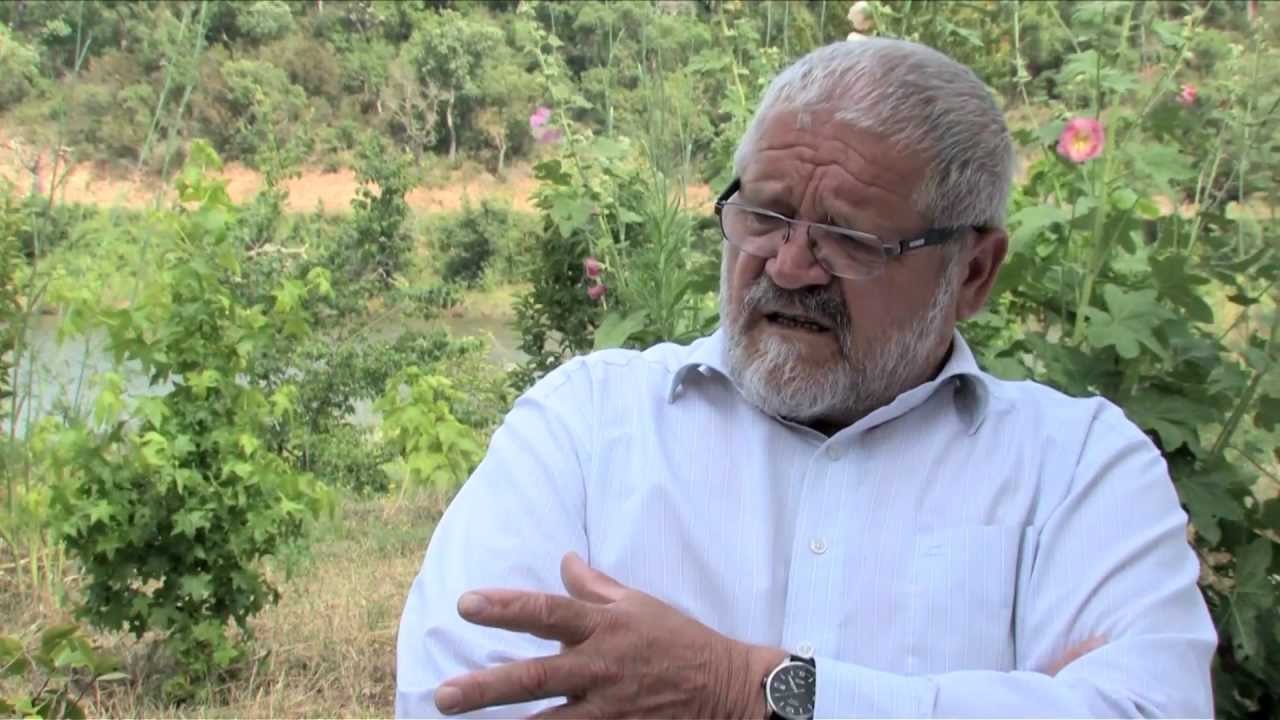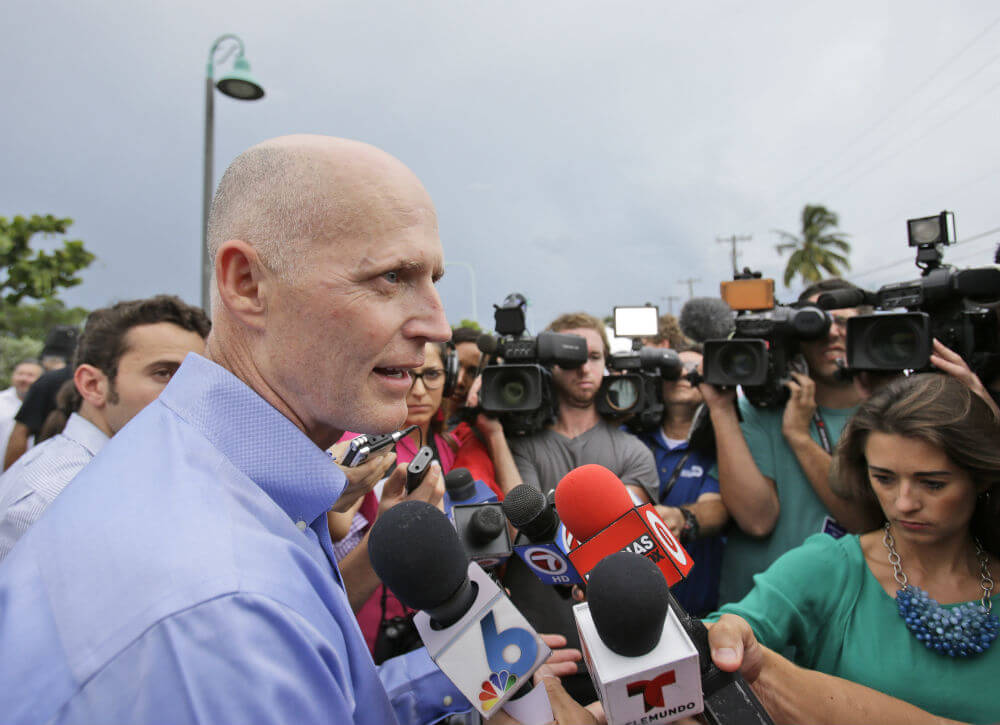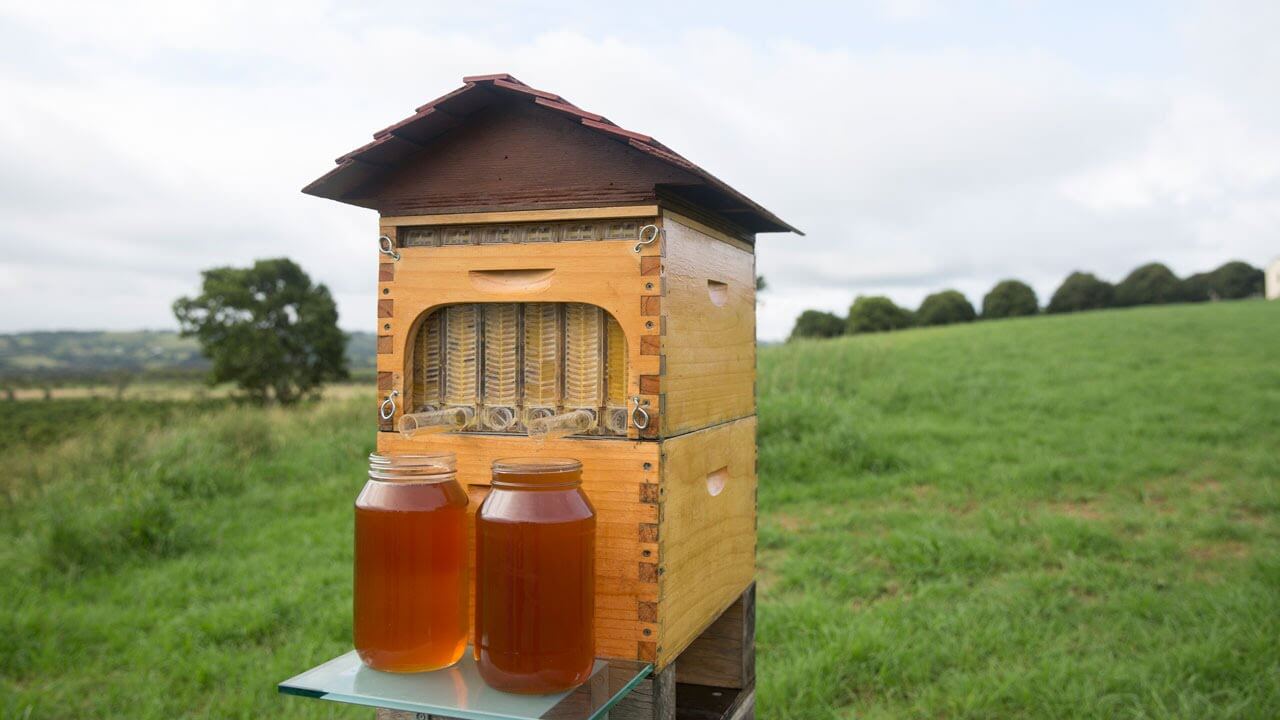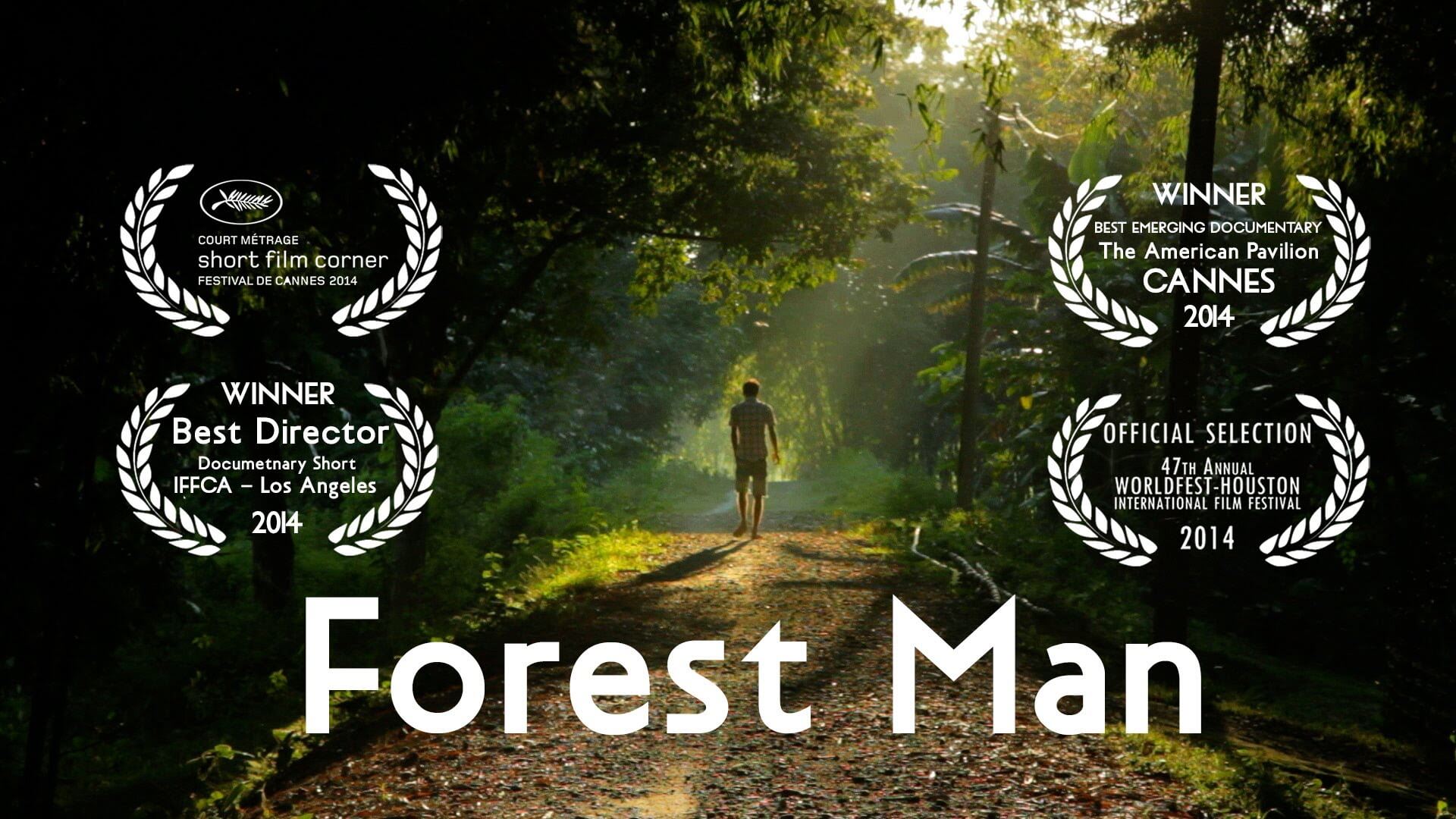The only way to deal with an unfree world is to become so absolutely free that your very existence is an act of rebellion.
Albert Camus
How One Man Revolutionized the Farming World
 Masanobu Fukuoka may be one of the most farsighted and downright radical farmers to have ever lived! Why? Because over the past 30 years, he gradually abandoned most conventional agricultural practices in order to return control of his land to the most skilled grower of all … Nature herself! In return – he claimed – he has reaped both bumper crops and a peace that surpasses understanding.
Masanobu Fukuoka may be one of the most farsighted and downright radical farmers to have ever lived! Why? Because over the past 30 years, he gradually abandoned most conventional agricultural practices in order to return control of his land to the most skilled grower of all … Nature herself! In return – he claimed – he has reaped both bumper crops and a peace that surpasses understanding.
On August 16, 2008 Masanobu died, but not without leaving behind some of the most important farming lessons known.
Look at this grain! I believe that a revolution can begin from this one strand of straw. Then take a look at these fields of rye and barley. This ripening grain will yield about 22 bushels (1,300 pounds) per quarter acre. I believe this matches the top yields in Ehime Prefecture (where I live), and therefore, it could easily equal the top harvest in the whole country since this is one of the prime agricultural areas in Japan. And yet . . . these fields have not been plowed for 25 years!
10 Best Herbs for Boosting Female Sex Drive
Maybe you haven’t felt the urge in a while. Perhaps it just hasn’t felt as good as it used to. It could be stress, or it could be something more. When it comes to boosting your sex drive, the topic may seem a bit taboo to discuss. Regardless, a healthy sex life is important for reducing stress, building a healthy relationship with your partner, and improving overall wellbeing. Diet and exercise offer the best solutions for stimulating sexual desire; yet, a number of herbal tools may also provide support. When you need a little boost, turn to these 10 herbs for boosting female sex drive help.
1. Ashwaganda Root
The Kama Sutra identifies ashwagandha as a potent igniter of passion and desire. While that benefit may get your immediate attention, its popularity with women has more to do with the way it stimulates libido and increases satisfaction. The herb can increase blood flow to the clitoris and other female sexual organs, creating an intense sexual experience.
2. Maca root
This has been the go-to herb for women living in the Andes for centuries. Maca’s high iodine content supports a woman’s hormone balance and its high zinc levels, an essential mineral for sex hormones, does more than fan the flames of desire. Women who took maca root in one study reported improved sexual experiences and satisfaction. [1]
3. Muira Puama
Women who use muira puama report a surge in libido, desire, sexual enjoyment and intensified orgasms. [2] Its positive effect on both pre- and post-menopausal sexual experience supports its overall benefits for female sexual and reproductive health. It probably comes as no surprise this herb is often called “potency wood.”
4. Dark Chocolate
This one doesn’t make the list by accident. Although not technically an herb, dark chocolate containing 70% cocoa may help increase dopamine levels in the brain. A rise in the brain’s “pleasure chemical” dopamine lifts the mood, relaxes, and improves the body’s response to stimulation.
5. Avena sativa
Generations of women stand by oats (Avena sativa) for its aphrodisiac and libido-stimulating qualities. Tradition holds it increases vaginal stimulation and advances the physical and emotional desires for sex. Scientists trying to understand how it works believe it frees bound testosterone, providing the body with the hormones needed for sexual stimulation.
6. Catuaba
The Tupi tribe of Brazil praises catuaba for its potent aphrodisiac qualities. Its active compound yohimbine energizes and stimulates libido and desire. Research has determined it increases dopamine levels in the brain, resulting in greater sensitivity to erogenous stimulation. Regular use is known to create erotic dreams and heighten sexual satisfaction and orgasm intensity. [3]
7. Damiana
Turnera diffusa, better known as damiana, grows natively in the American Southwest, Mexico, the Caribbean, and South America. Many consider its leaf a highly-prized libido enhancer. Flavonoids, phenolics, glycosides, terpenoids, and even caffeine all contribute to reduced feelings of stress and increased blood flow, particularly to the pelvic area where increased sensitivity leads to heightened stimulation. [4]
8. Suma root
Sometimes called Brazilian Ginseng, this herb is extremely popular with the native population in South America for the way it aids female hormonal balance and excites libido. Science has confirmed suma root increases levels of estradiol-17beta, the primary estrogen hormone during a woman’s reproductive years. [5] Women who use this herb report more intense sexual experiences and greater satisfaction.
9. Tribulus terrestris
Studies of women who use this herb report greater desire, increased arousal, lubrication, more intense orgasms, and satisfaction. [6] Tribulus stimulates androgen receptors in the brain making the body much more responsive to testosterone and other sex hormones. It also helps to reduce stress, anxiety, and depression.
10. Tongkat Ali
Called the greatest natural aphrodisiac by Dr. Oz, Tongkat ali extract has been used by women to arouse desire and increase erogenous sensitivity. It’s traditionally given to women suffering from low libido, as it also supports positive responses to stress and stimulates memory and overall brain function. By normalizing hormone levels with a gentle increase of testosterone, women also experience increased metabolism and an easier time losing and maintaining weight. [7]
What Are You Waiting For?
Don’t let stress drive away desire, and certainly don’t believe the desire for sex should fade with age. Maintaining balanced hormone levels promotes overall health, not to mention a healthy libido. So if the flames of passion seem more like cinders these days, it may be time to consider additional tools for kindling your inner fire.
Have you tried one or more of these herbs for your sex drive? Share your experiences below! Let’s keep it G-rated, ladies!
-Dr. Edward F. Group III, DC, ND, DACBN, DCBCN, DABFM
Article references:
- Dording CM1, Fisher L, Papakostas G, Farabaugh A, Sonawalla S, Fava M, Mischoulon D. A double-blind, randomized, pilot dose-finding study of maca root (L. meyenii) for the management of SSRI-induced sexual dysfunction. CNS Neurosci Ther. 2008 Fall;14(3):182-91. doi: 10.1111/j.1755-5949.2008.00052.x.
- Waynberg J1, Brewer S. Effects of Herbal vX on libido and sexual activity in premenopausal and postmenopausal women. Adv Ther. 2000 Sep-Oct;17(5):255-62.
- Oliveira CH1, Moraes ME, Moraes MO, Bezerra FA, Abib E, De Nucci G. Clinical toxicology study of an herbal medicinal extract of Paullinia cupana, Trichilia catigua, Ptychopetalum olacoides and Zingiber officinale (Catuama) in healthy volunteers. Phytother Res. 2005 Jan;19(1):54-7.
- Szewczyk K1, Zidorn C2. Ethnobotany, phytochemistry, and bioactivity of the genus Turnera (Passifloraceae) with a focus on damiana-Turnera diffusa. J Ethnopharmacol. 2014 Mar 28;152(3):424-43. doi: 10.1016/j.jep.2014.01.019.
- Oshima M1, Gu Y. Pfaffia paniculata-induced changes in plasma estradiol-17beta, progesterone and testosterone levels in mice. J Reprod Dev. 2003 Apr;49(2):175-80.
- Akhtari E, Raisi F, Keshavarz M, Hosseini H, Sohrabvand F, Bioos S, Kamalinejad M, Ghobadi A. Tribulus terrestris for treatment of sexual dysfunction in women: randomized double-blind placebo – controlled study. Daru. 2014 Apr 28;22(1):40.
- Henkel RR1, Wang R, Bassett SH, Chen T, Liu N, Zhu Y, Tambi MI. Tongkat Ali as a potential herbal supplement for physically active male and female seniors-a pilot study. Phytother Res. 2014 Apr;28(4):544-50. doi: 10.1002/ptr.5017.
It’s ‘Orwellian’: Florida Scientists Respond To Report That State Agency Banned ‘Climate Change’
CREDIT: AP Photo/Wilfredo Lee
On Sunday, the Florida Center for Investigative Reporting published a story that alleged that Florida’s Department of Environmental Protection (DEP) had unofficially banned its employees from saying the words “climate change” and “global warming” in official communications. The charge of censorship clashes sharply with Florida’s vulnerability to the effects of climate change, particularly sea level rise.
But Ben Kirtman, professor of atmospheric science at the University of Miami who’s been in contact with members of the DEP and other state agencies in the past, wasn’t surprised by the report. He told ThinkProgress that he’d spoken with employees of other Florida agencies – he declined to name which ones – who had said that they, too, had been told not to talk about climate change in their professional capacity. So before he read the FCIR report, he knew that this censorship was likely occurring, at least at some agencies.
“The first thing they said to me was, ‘Oh we’re not allowed to talk about that,'” Kirtman said of a meeting in which he brought up climate change with employees of a state agency.
The FCIR report included multiple interviews with former employees of and volunteers with the state’s DEP, all of whom said the unwritten rule had been implemented soon after Gov. Rick Scott (R) took office in 2011. Both the DEP and the governor’s office denied the existence of a policy on talking about climate change to the FCIR, and Gov. Scott himself has also reportedly said that the claims aren’t true. The DEP confirmed its stance denying the policy to ThinkProgress Monday.
“It’s simply not true – there’s nothing else to add,” Dee Ann Miller, spokesperson for Florida’s DEP, said. “We have no such policy.”

CREDIT: AP PHOTOS/BRENDAN FARRINGTON
But Kirtman said he thinks there’s been a “concerted effort” from Gov. Scott’s administration to prevent climate change from being a major part of the state government’s discussion. Gov. Scott has historically avoided questions regarding climate change, saying in 2010 that he had “not been convinced” that the phenomenon was happening, but answering only “I’m not a scientist” during last year’s gubernatorial race.
Kirtman said he thinks the unofficial policy on mentioning climate change at the DEP was a political move on the part of the governor’s office.
“I believe it was a political mistake, that the Scott administration made this political calculation that they would lose political support if they allowed their administration to talk about climate change,” he said, adding that he thought Gov. Scott was following the lead of some members of Congress in trying to ignore the issue of climate change.
Kirtman’s previous experience with Florida agencies may have stifled his surprise at the FCIR report, but David Hastings, professor of marine science and chemistry at Florida’s Eckerd College, said he was shocked by the article.
“At first I thought it was out of the Onion or some other kind of satirical website,” he said. “It was like a page out of 1984. It was Orwellian. That they are not allowing a word to be used…it’s scary.”
Both scientists – along with Jeff Chanton, the John Widmer Winchester Professor of Oceanography at Florida State University – were dismayed by the article’s claims. Chanton said the unwritten rule amounted to “muzzling science,” and Kirtman said he thought it would be difficult for the state to make significant headway on mitigating and adapting to climate change if state agencies like the DEP weren’t allowed to talk about it.
That’s important because, in Florida, the threats surrounding climate change and its impacts are only becoming more dire – the state, especially the Southern region, is particularly vulnerable to sea level rise and the ecological, economic, and infrastructure-related problems that come with it. Though Scott last month announced a proposed effort to mitigate the effects of sea level rise in Florida, Florida’s state government has been slow to act on climate change.
The scientists stressed the need for the state to use the latest climate science to inform its decisions on climate change, and said the state needed to start planning for climate impacts now, or risk much costlier adaptation measures in the future.
“To say you can’t talk about the best available science is crazy,” Kirtman said. “It’s like telling doctors they can’t do a CAT scan when people have cancer because, ‘I don’t believe in it.'”
Both Kirtman and Hastings expressed worries that the policy was anti-business too. Acting on climate change could bring a variety of business opportunities to the state – in renewable energy, resilient building and retrofitting, and other areas – and blocking that economic growth goes against the governor’s pro-jobs mentality.
All three scientists were among the five who met with Gov. Scott last August, in an attempt to provide him a basis on what climate change is and what effects it’s having in Florida. The scientists left that meeting unsure whether Gov. Scott had gotten the message – he’d taken up about a third of the 30-minute meeting with small talk and hadn’t asked any climate-related questions, they said – but they’re still hopeful that the governor will meet with them again on the issue. They’re also hopeful that the governor’s office will address the policy on climate change censorship, saying definitively that state employees will be able to speak about climate change from now on.
“What the administration needs to do is come out and say, ‘we’ve made a mistake, were sorry, and we’ll do better in the future,” Chanton said. “I believe they’ll do the right thing.”
BMW’s New Electric Car Sheds Weight With Hemp
TruthOnPot.com – BMW has finally come out with an all-electric car, which made its world debut on Monday. And in true BMW fashion, they’ve outdone just about every other electric car in what matters most: Weight. The BMW i3 is a mere 2,700 pounds – 800 pounds less than the Nissan Leaf and the Chevy Volt.
Weight is essential because the i3 depends entirely on a 22 kWh lithium-ion battery for fuel, which also contributes about 20% of the car’s total mass. The only solution was using a variety of low-weight materials to maximize fuel efficiency and driving range (130-160 km per charge) – hemp being one of them.

Like many BMWs before it, the i3 features door panels made of hemp. Mixed together with plastic, hemp helps lower the weight of each panel by approximately 10%.
But that’s not all. The hemp fibers – which are left exposed – also offer a design element, reports Bloomberg. According to Benoit Jacob, the i3′s designer, the use of natural materials like hemp and kenaf (a plant in the hibiscus family) makes the i3′s interior feel like “a small loft on wheels.”

While any mention of hemp always seems to perk ears, the fact that hemp was used to make parts of the i3 shouldn’t come as a surprise. BMW has been testing and using natural fibers like hemp since the 1990′s, when government pressure to use recyclable materials forced most European car makers to go greener.
Starting out with trunk liners and airbag parts, BMW eventually expanded into making door panels out of hemp. By 2006, hemp panels were used in all of BMW’s 5 series models. Many luxury European car makers – including Mercedes and Audi – now make use of hemp in some form.

What’s next? The BMW i8 – an electric hybrid supercar that is set to launch early next year. And yes, it’s also made with hemp. This versatile, eco-friendly car component is definitely here to stay.
One Man Holds a PATENT That Could Crush MONSANTO and Change The World
This may be some of the most important information we ever share here at LoveClicks.org. What you are about to read holds tremendous potential to radically change the entire world in many positive ways.
Monsanto does not want this article to go viral, for if it does, it could very well bring about their demise.

In 2006 a patent was granted to a man named Paul Stamets. Even though Paul is the world’s leading mycologist, his patent has received very little attention and exposure. Why? As stated by executives in the pesticide industry, this patent represents “the most disruptive technology we have ever witnessed.” And when they say disruptive, they are referring to it being disruptive to their chemical pesticides industry.
We can no longer deny that the pesticide industry is causing incredibly detrimental effects to the earth, people, animals, plants & insects too. The rapid decline of the world’s bee populations is being attributed to Monsanto’s chemical concoctions that are being sprayed over farmers fields around the world. ( Though the number of countries who have kicked out & banned Monsanto is growing) The use of chemical pesticides is a practice that absolutely must stop and new methods must be employed before it’s too late.
Yet with Monsanto generating nearly $16 BILLION dollars in 2014, they certainly do not want anything getting in the way of that money flow. That kind of revenue gives them a lot of resources and abilities to suppress information that may be damaging to them.
Like this patent of Paul Stamet’s. Paul has figured out how to use mother nature’s own creations to keep insects from destroying crops. It is what’s being called SMART pesticides. These biopesticides provide a safe & nearly permanent solution for controlling over 200,000 species of insects, and it is all thanks to the ‘magic’ of mushrooms.
I won’t go into the specifics of how it all works, for most of us won’t really understand it anyway, but to summarize, he does this by taking entomopathogenic Fungi (fungi that destroys insects) and morphs it into not producing spores. This in turn actually attracts the insects who then eat and turn into fungi from the inside out!


For those who do want to do their own further reseach on the topic, I have provided a list of links below to help you along.
As more people wake up to the damaging effects of Monsanto’s chemicals & GMO foods, the demand for truly nutritious, pesticide free, non-gmo, organic foods is on the rise. We are seeing more community gardens & urban forests being created. More people are starting to grow food, not lawns. Permaculture is becoming more widely talked about and understood. There is a major paradigm shift happening right now as our collective consciousness expands and awakens.
These truly are exciting, monumental times we live in. We are seeing old world ways crumble and power structures fall as we wake up and step up to collectively create a more healthy and sustainable way of working, living & playing together on this planet. The time has come. We can do this!
Here is a link to the patent we are speaking of: 7,122,176A list of all the patents Paul has applied for:Plenty of information about Paul Stamets:Wikipedia page about Paul Stamets:
http://en.m.wikipedia.org/wiki/Paul_Stamets
http://www.fungi.com/about-paul-stamets.html
http://patents.justia.com/inventor/paul-edward-stamets
http://www.google.com/patents/US7122176
And finally, here is a TedTalks video by Paul in 2008 called:
6 Ways Mushrooms Can Save The World
Please spend a few moments to share this article as far and wide as you possibly can. The information and links on this page are important and hold the potential to bring about profound changes on this earth, but only if enough people see and become aware of this. Thank you.
Making sure we’ll be safe: A global solution to avert disastrous climate change
In this article an alternative to the inter-governmental negotiations will be presented. First the project is introduced, the systemic problem of the current UNFCCC process is explained and ways to help are briefly presented. The project is called CapGlobalCarbon, as that is literally the ambitious thing we intend to do: put a cap on the amount …
Plastic Smog: Microplastics Invade Our Oceans
The idea that there are “patches” of trash in the oceans is a myth created 15 years ago that should be abandoned in favor of “plastic smog,” like massive clouds of microplastics that emanate out of the five subtropical gyres. My recent publication in the journal Plos One, estimates 269,000 tons of plastic from 5.25 trillion particles, but more alarming than that is it’s mostly microplastic (>92 percent in our study) and most of the plastic in the ocean is likely not on the sea surface.
Recent research has shown microplastics in ice cores, across the seafloor, vertically throughout the ocean and on every beach worldwide. The little stuff is everywhere.
If you follow the life of plastic in the oceans, as we have done for 50,000 miles since 2009, you find the large items leaving coastlines in droves, then it rapidly shreds as it migrates toward the calmer waters of the subtropical gyres where sunlight, waves and nibbling fish rip it to micro-size particles smaller than a grain of rice. Microplastic then flow through the bodies of billions of organisms, making their way out of the gyres to deeper currents, and ultimately the seafloor. That’s the end-life of plastic.
Visualize the problem as “plastic smog” much like the way you can look up and visualize clouds of air pollution over cities. It’s very similar. We solved the air pollution problem by stopping the source with better emission controls on cars and power plants. There were people that suggested sucking air pollution out of the sky, but because people could look up and see the problem they understood that only stopping the source would work. The exact same logic applies to microplastic pollution in the world’s oceans. Because there are only a handful of scientists that understand ocean plastic pollution, and the public largely relies on the media for information, there’s an unusual amount of attention given to ideas to suck up plastic from the sea.
What 5.25 trillion particles tells us is that emission controls are the only viable solution. And that’s where we need your help. By supporting our microbead ban, which is one of many campaigns to phase out bad plastic design, you will make a long-lasting impact on fixing the problem.
Watch here as I provide an overview of our recent study:
However there is a plan to clean the oceans and it’s amazing
Sao Paulo is about to run out of water – Seriously…
São Paulo, home to around 20 million, is experiencing its lowest rainfall since 1930, and new water-saving measures have been introduced in an attempt to manage the escalating catastrophe.
If it doesn’t rain in Sao Paulo, Brazil in the next 45 days, the system that provides half the city’s drinking water will run dry.
Sao Paulo is South America’s largest city, and is currently experiencing its worst drought in 50 years. So far, the drought has hurt corn and cotton crops, driven up prices of sugar and orange juice, interrupted production of beer and paper, and left cattle and goats to starve.
But as the drought has dragged on, the executive secretary of non-profit water association Consorcio PCJ told Bloomberg News on Tuesday that Sao Paulo’s largest water system — the Cantareira — is currently at less than a quarter of capacity. Though the Cantareira is supposed to supply water to approximately 10 million people in Sao Paulo, which has a population of 20 million, its levels are the lowest its been in decades, according to a report in the Global Post.
If it doesn’t rain before late March, all of the system’s water will be dried up. But if it doesn’t rain before Feb. 15, Sao Paulo Governor Geraldo Alckmin said the city will have to begin rationing its supplies — something that hasn’t happened since 2003. January was the hottest month on record in the city, Reuters reported, and meteorologists expect little rain in the next week.
Services including schools and hospitals are having to adapt to the country’s newfound water struggles, with The Telegraph reporting that doctors have even been forced to cut short dialyses treatment for kidney patients.
The Cândido Fontoura children’s hospital has refuted claims that it went without water earlier this month, but biologist Analice Dora expressed fear: “Everyone is worried. Hospitals are the one place that can’t lack water.”
 Though there has been a recent uptick in rainfall in the region, it hasn’t been enough to boost supply in a country nominally the most water-rich in the world.
Though there has been a recent uptick in rainfall in the region, it hasn’t been enough to boost supply in a country nominally the most water-rich in the world.
Current reserves stand at just 10 per cent – known as the “dead volume” – and the government has warned that it could get worse in the coming months.
 Professor Decio Semensatto from the Federal University of São Paulo has likened the current water situation to a “semi-desert”.
Professor Decio Semensatto from the Federal University of São Paulo has likened the current water situation to a “semi-desert”.
With the water crisis likely to last for years, Semensatto sees the testing of solutions as “training for the next few years, which will be worse”.
He holds water utility Sabesp responsible; it has known for years that drought-like conditions would soon arrive, but took few preventative steps.
The current crisis has reached a point that actual water rationing may be necessary, with state governor Geraldo Alckmin last month admitting it was already happening.
Brazil is not used to such scarcity, but São Paulo is fast getting used to way things have to be run; there are incentives to use less water, fines for those who use too much and the possible installation of more water-efficient taps.
Sabesp will see if such steps can make the difference before it decides whether to formally introduce wider water rationing – it refuses to rule it out.
A Sea of People Fighting for Water in Sao Paulo
These sacred luxury consumer temples (where the water tanks are always full), lowered their doors before the the march that brought together 15 thousand men, women and children – a significant part dressing in MTST (Workers Homeless Movement)’s t-shirts – in addition to other left wing organizations protesting on Thursday (26/02) against the water crisis in São Paulo.
It was the first major public protest on the issue and involved people like the seamstress Maria Francisca da Conceição, 69, who walked, wearing her flip-flops, the 6300 meters that separate Largo da Batata, in Pinheiros neighborhood, and the Bandeirantes Palace in Morumbi, where is the official residence of the governor Geraldo Alckmin (PSDB) is located.Maria Francisca has been a resident of an MTST occupation in Numa Pompilius, in the extreme east of the city of São Paulo, since early 2014, when she joined the homeless movement. A São Paulo native, she says she has always been afraid to end up under water, drowning (Sao Paulo is known for the heavy rains that often result in floods that stop the entire metropolis). She never imagined that she would go through the rigors of a drought.
Francisca has no water tank. When Sabesp (Sao Paulo’s water management company) turns off the supply, as it has occurred every day between 1pm and 7 am recently, she is completely without water. The unified protest was designed to hold the the government of São Paulo and Sabesp responsible for the crisis, and to ask for measures to reduce the impact of the crisis on the poorest population (which has been the most affected by the water rationing, despite official denials). Activists also demand transparency and increasing access to information about the real situation of the reservoirs, and oppose to the state proposal of increasing water supply fares (scheduled to come into effect in April), that is considered a perverse measure, that privileges the biggest and wealthier water consumers, while leaving the poor unassisted.
“I pay … but I shouldn’t… Because water is not a commodity” was one of the slogans yelled by the marching crowd, which also included a water truck as a “parade float”, carefully escorted by heavily armed military police officers. “That’s what will happen with the deepening crisis. Police will “guard” the water for those who can pay for it, while we die of thirst. We are here to show that we will not accept it”, said protester Reginaldo Silva, a resident of the MTST occupation People’s Cup (An occupation started at the onset of the Soccer World Cup in Sao Paulo in 2014.
“Dude, and look at these houses here, all these barons in them… In just one of them, we could fit an entire occupation. And it seems all empty!” Homeless workers coming from the edges of the city and the cities in the outskirts of the metropolitan region discredited the ostentatious mansions of Morumbi, surrounding the Bandeirantes Palace.
Dozens of selfies were taken in front of the mansions by protesters, it was their souvenir. “Looks at how these people live!” said protesters amused by the luxury around them.The arrival of the march at Bandeirantes Palace, after two hours of walking, and many hours of preparation, coincided with tired bodies slumping in search of rest on the hot pavements.
Meanwhile, a negotiating committee was being received by the chief of staff of Governor Alckmin’s office, Edson Aparecido. At the end of 90 minutes of conversation, the eight homeless protesters came out with the government’s commitment to supply 500 liters water tanks to families in need, to be listed based on MTST records.
The movement asked to be included in the Crisis Committee, with other representative bodies and this request was granted. Finally, a meeting with Paul Massato, metropolitan director of Sabesp, has been scheduled for next week in order to discuss and implement a comprehensive distribution plan for water tanks and the construction of artesian wells, in addition to plan the logistics for sending water trucks to the most deprived regions.
The contracts that favor large consumers of Sabesp should also be analyzed at the meeting with Massato.
Happy to have completed the march without violent incidents, protesters were instructed by MTST leader, Guilherme Boulos, the to move into the busses that would take them back to MTST occupations. The act came to an end to the music “Cearense Supplication” by Luiz Gonzaga (Ceara is a state in the northeast that has been hit by extreme droughts in the previous decades).
“Oh! God forgive this poor guy
Who prayed on his knees a bit
Asking for rain to fall endlessly (…)
Sorry I ask all the time to get the winter
Sorry I ask to end the hell
That always burned my Ceará”
It seems the southeast has turned into its worst nightmare, and we could well rename the song to “São Paulo Supplication”…
This piece was reprinted by Truthout with permission or license. It may not be reproduced in any form without permission or license from the source.
Biodegradable Coffee Cups Turn Into Trees When Thrown Away!
A creative company in California called Reduce. Reuse. Grow has designed a coffee cup that is not only biodegradable, but even has seeds in its walls so that it can be planted and grown!
The cups, which are currently part of a Kickstarter campaign, will have seeds embedded in their walls based on their locations. Participating stores will encourage people to plant the cups themselves or to return them to be planted by the company.
400 million cups of coffee are consumed every day in America and usually thrown straight into the trash.
You can learn more about this incredible plan to replace ordinary coffee cups with biodegradable ones on the project’s website. You can also currently help fund this ambitious and environmentally smart project on Kickstarter.
Yup – they have our support!!!

We actually did a Podcast with Drew Beal from another organization known as Kill The Cup you can watch below




















